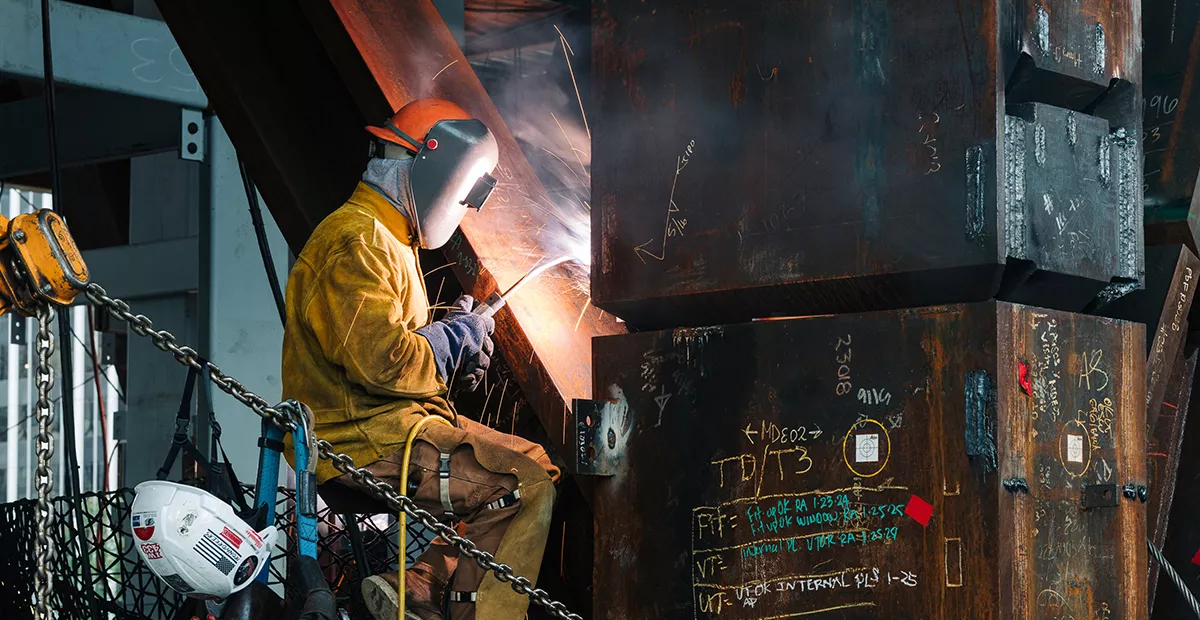Building the Future: Bridging the Gap in the Skilled Trades Workforce
November 25, 2024

By Kris Manning
Over the next 10 years, construction spending is expected to increase by roughly one trillion dollars – creating 300,000 new jobs in the skilled trades annually. During the same time period, we will also face a major challenge: 30% of the workforce – and their knowledge and experience – will retire, adding to the 400,000 already unfilled positions.
How do we address this gap and meet the surging demand for skilled workers? Clark is taking proactive steps through targeted partnerships to help solve this industry-wide issue.
Image

Developing and strengthening the craft workforce starts with raising awareness. We’re heading into schools to connect students and communities with information about the growing demand for skilled trades, the diverse roles available, and the multitude of opportunities available throughout a career. Working directly with middle and high schools, trade schools, and community colleges, we are exposing students to different trades, providing hands-on demonstrations, and hosting jobsite visits to spark interest in the field.
We are also educating parents along with educators, counselors, and career advisors about the opportunities, growing demand, and career potential within the skilled trades – opportunities that do not require a four-year college degree.
In addition to generating excitement, it’s critical that we change public perception and dispel lingering myths; namely, that these careers are dead-end jobs or that you can’t earn a good salary with benefits. That line of thinking couldn’t be farther from the truth.
Image

Regardless of your background, inclinations, interests, and experience levels, a career in the skilled trades provides opportunities for growth while building what matters in your community. There are countless examples of individuals who started as entry-level craft professionals, worked hard, and continuously developed throughout their careers.
With perseverance, there are so many ways to grow: someone starting out can become a journeyman, foreman, superintendent, corporate executive, or business owner, to name a few. Gaining the knowledge, skills, and experience of craftwork becomes a springboard for countless future opportunities.
Image

Another way Clark is addressing workforce challenges is by connecting with adults looking to change professions. With this audience, we are highlighting the competitive pay and benefits package, demonstrating the personal and community value of the work, and emphasizing the teamwork and camaraderie.
Craftworkers thrive on collaboration and hard work to complete projects that shape cities and towns. While opening pathways of opportunity to students or those looking to change careers, Clark’s engagement with schools, families, and individuals ensures a new generation of builders will be ready to deliver vital assets to our communities for decades to come.
Learn more about craft careers with Clark.
Significant opportunities for skilled workforce
Over the next decade, spending on construction is expected to increase by over $1 trillion, leading to a total of 13.1 million skilled professionals needed to support future development.
Kris Manning, chief operating officer of Clark's Infrastructure Group, is responsible for optimizing project delivery across the company’s heavy civil portfolio and self-perform operations and overseeing the group’s efforts to attract, retain, and grow management, field leadership, and craftworkers.